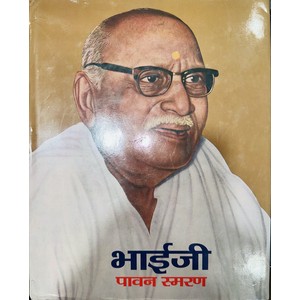Rigveda is the oldest and most significant of the four Vedas in Hinduism. It is a collection of hymns and is considered one of the earliest literary works in human history. The Rigveda is written in Vedic Sanskrit and is a crucial source for understanding the ancient Indo-Aryan culture, religion, and philosophy.
Structure and Composition
The Rigveda is divided into 10 books, known as Mandalas, and consists of 1,028 hymns (sūktas) comprising approximately 10,600 verses. Each hymn is composed of a number of verses called ṛcas, which are the fundamental units of the Rigveda.
- Mandalas (Books):
- Mandalas 2 to 7: These are the oldest sections, each attributed to a particular family of sages (ṛṣis) and are known as the family books.
- Mandalas 1 and 10: These are considered the youngest parts and contain hymns from various authors.
- Mandalas 8 and 9: These have a mixture of older and newer hymns, with Mandala 9 being entirely dedicated to the Soma ritual.
- Rishis (Sages):
- The hymns were composed by various rishis or sages over a period of several centuries. These include prominent figures like Vishvamitra, Vashishtha, Atri, and others.
- Deities:
- The hymns are dedicated to a variety of deities, reflecting the polytheistic nature of Vedic religion. Major deities include:
- Agni: The fire god, mediator between gods and humans.
- Indra: The king of gods, associated with thunder and rain.
- Soma: The god associated with the sacred Soma plant and the ritual drink made from it.
- Varuna: The god of cosmic order and water.
- Mitra: The god of friendship and contracts.
- Ushas: The dawn goddess.
- Ashvins: Twin horsemen deities associated with health and medicine.
- The hymns are dedicated to a variety of deities, reflecting the polytheistic nature of Vedic religion. Major deities include:
Themes and Content
- Cosmogony and Creation:
- The Rigveda contains several hymns that explore the origins of the universe and creation myths, including the famous Nasadiya Sukta (Hymn of Creation).
- Nature and Elements:
- Many hymns are devoted to natural elements like the sun, moon, rivers, and mountains, reflecting the Vedic people’s reverence for nature.
- Rituals and Sacrifices:
- The Rigveda provides insights into the rituals and sacrifices (yajnas) that were central to Vedic religion. These rituals were performed to appease the gods and ensure prosperity and cosmic order.
- Philosophical and Ethical Reflections:
- Some hymns delve into philosophical questions about existence, the nature of reality, and the human condition.
- Society and Values:
- The hymns reflect the social structure, values, and daily life of the Vedic people, including their emphasis on truth, righteousness, and communal harmony.
Language and Poetic Form
The Rigveda is composed in an archaic form of Sanskrit known as Vedic Sanskrit. The hymns are written in a highly poetic and metrical style, utilizing various meters such as Gayatri, Anushtubh, Trishtubh, and Jagati.
Preservation and Transmission
The Rigveda has been preserved through an oral tradition for thousands of years. Brahmin priests memorized and transmitted the hymns with remarkable accuracy through generations. This oral tradition ensured the preservation of the text’s purity and pronunciation.
Commentaries and Interpretations
Several ancient and medieval scholars have written commentaries on the Rigveda to explain its complex language and content. Notable commentators include:
- Yaska: An ancient grammarian who wrote the Nirukta, one of the earliest commentaries on the Vedic texts.
- Sayanacharya: A medieval scholar whose extensive commentary on the Rigveda is one of the most comprehensive.
Importance and Influence
- Religious Significance:
- The Rigveda is considered the ultimate authority in Vedic rituals and ceremonies. Its hymns are still recited during various Hindu religious ceremonies.
- Cultural and Historical Significance:
- The Rigveda is a vital source for understanding the early history, culture, and beliefs of the Indo-Aryan people. It provides valuable insights into their social structure, economy, and interactions with nature.
- Philosophical Influence:
- The philosophical inquiries and ideas in the Rigveda laid the foundation for later developments in Indian philosophy, particularly in the Upanishads and the Vedanta tradition.
Conclusion
The Rigveda is not just a religious scripture but also a historical document that offers a glimpse into the lives, thoughts, and beliefs of ancient Vedic civilization. Its hymns encompass a wide range of themes, from the mundane to the profound, making it a timeless source of spiritual and intellectual inspiration.
Leave your comment
Related posts
वृंदावन रज – श्रीकृष्ण-धाम की पवित्र धूलवृंदावन की पावन भूमि से संकलित यह रज श्रीकृष्ण के चरणामृत-स्पर्श की दिव्य ऊर्जा से भरपूर है। पूजा, तिलक, ध्यान और दैनिक आध्यात्मिक साधना [...]
Spiritual Significance of Vrindavan Raj / Vrindavan Soil Vrindavan Raj – Sacred Dust of VrajCollected from the holy land of Vrindavan, this divine Raj carries the spiritual essence of Sri [...]
"भाईजी पावन स्मरण" is a deeply revered book that offers an intimate glimpse into the life, thoughts, and contributions of Shri Hanuman Prasad Poddar, lovingly referred to as "Bhaiji." A [...]





